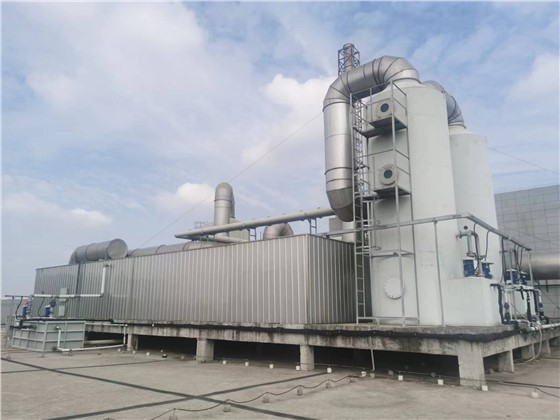In the world of industrial odor control, biological deodorization systems have become an environmentally friendly and highly effective solution. At the heart of these systems lies a critical component that determines overall performance: microorganisms.
The efficiency of odor removal depends largely on the type, vitality, and environmental adaptability of the microbial communities involved. At Chaori Purification, we understand that selecting the right microorganisms and creating the ideal conditions for their growth is key to successful odor treatment.

Microorganisms are the engine of the biological deodorization process. These living organisms metabolize odorous compounds and break them down into harmless end-products like carbon dioxide (CO?), water (H?O), and inorganic salts.
Several types of microorganisms can contribute to this process, including:
Bacteria (especially autotrophic and methylotrophic bacteria)
Fungi
Algae
Each plays a unique role in degrading different classes of pollutants such as ammonia, hydrogen sulfide, and volatile organic compounds (VOCs).
The main component of a biological deodorization system is the biofilter. It is composed of several functional layers that work together to create an optimized environment for microbial activity:
1. Gas Distribution Layer
Supported by a steel or structural frame, this layer ensures that the incoming air is evenly distributed across the filter surface, minimizing dead zones and channeling.
2. Filler (Media) Layer
This is the microbial habitat. The filter media is designed to:
Provide a high surface area for microbial attachment
Support moisture retention to promote metabolic activity
Allow airflow and gas diffusion to ensure uniform treatment
Our systems typically use media pre-inoculated with selected strains of autotrophs and methylotrophs, cultivated and separated using proprietary techniques.
3. Spray & Irrigation Layer
Positioned above the media, this system periodically rinses the filter bed to:
Remove excess biomass and metabolic byproducts
Maintain adequate moisture levels
Prevent clogging and compaction of media
4. Thermal Regulation System
To keep microbial activity within optimal ranges (typically 25–35°C), we integrate a temperature control unit into the circulating water tank. This allows the filter bed temperature to remain stable—even in colder environments.
There are two main categories of influencing factors:
Mass Transfer Limitations
The efficiency of odor removal depends on how effectively the gas-phase pollutants can transfer into the aqueous biofilm where microorganisms reside.
Environmental Conditions for Microbes
Temperature, pH, nutrient availability, oxygen levels, and moisture all significantly affect microbial health and degradation capacity.
Ensuring optimal environmental conditions allows the microbial community to remain active and resilient—especially under fluctuating loading conditions.
Why Are Microorganisms So Important?
The Structure of a Biological Filter System
Key Factors That Affect Biological Deodorization Performance

